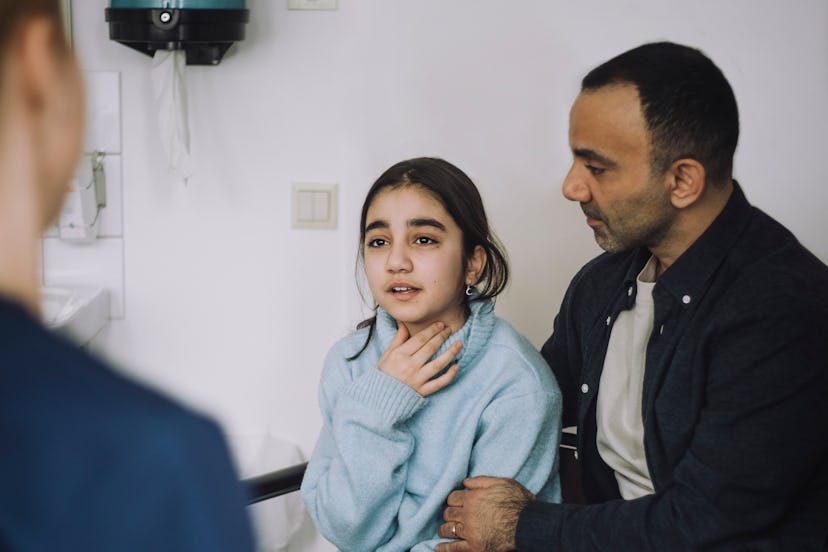4 Cost-Saving Hacks An ER Pediatrician Wants You To Know About
Healthcare is confusing and expensive, but there are some ways to maximize your healthcare dollars.

As many parents know all too well, the healthcare system in the United States is a hot mess. The costs of health insurance alone can feel like an unworkable maze with mountains of confusing paperwork and numbers that will make your head spin.
Making matters worse for an increasing number of families is the fact that an alarming number of kids are underinsured — according to a new study released by Columbia University Mailman School of Public Health, nearly 20% of U.S. children, totaling 16.5 million annually, are covered by insurance that fails to meet a child’s needs.
The researchers also found that inadequate coverage is exceptionally high among kids covered by commercial insurance — typically insurance coverage provided by a parent’s employer — with nearly one-third of kids with private coverage inadequately covered compared to just 10 percent of publicly insured kids.
The study authors call for policy changes that would maintain public insurance consistency and the quality of commercial insurance to guarantee that all US children have access to affordable, high-quality health care. But what can parents do in the meantime? We talked to pediatric emergency physician Christina Johns, M.D. of PM Pediatrics who had four simple suggestions for parents to maximize the impact of healthcare dollars.
1. Focus On Prevention
“Prevention is much greater than therapy,” Johns says. “My first suggestion for cost savings on health care is to stay current on preventative care, including vaccines. Most plans — even those that would count as underinsured — provide coverage for preventative care like annual checkups and screenings, so don't miss those opportunities.”
Johns encourages parents to inquire about services available at school-based health clinics, as they typically provide preventive services, early diagnosis and treatment, risk assessments, and vaccinations. School health personnel may also point parents in the direction of community organizations that provide similar services for a free reduced cost.
2. Purchase Generic Medications
There’s no reason to request name-brand medications when your child feels under the weather. Generic brands can be as much as 80% to 85% lower in cost than comparable name-brand products, and just as effective.
“People get really jazzed up about brand names,” Johns says. “We think we are better off buying Motrin or Advil when in reality, generic Ibuprofen is the same medicine at a much lower cost.”
Johns notes that the stabilizer or flavorings may differ in a generic medication but that the active ingredients will be the same and of the same quality. If you can only remember brand names instead of drug names, find the active ingredient on the label and then find its generic option. The two products should be close to each other on the shelf.
When it comes to prescription medication, most insurance plans require the generic option, but you can always double-check with your healthcare provider or pharmacist to make sure you’re getting the least expensive option.
3. Don’t Overmedicate Your Kid
Speaking of expensive medications, parents need to understand what they do and when it’s better to bypass them altogether. Take over-the-counter cough medicines that contain dextromethorphan, for example. There’s little evidence that they’re actually effective, making that $10 bottle of cough syrup something parents can easily pass up to save a few bucks.
“I find lots of parents want antibiotics to help get rid of their child’s cold, but those tend to be viral infections that antibiotics can’t treat,” Johns says. “Or they’ll turn to anti-diarrheal medicines for stomach flu. But we do not typically recommend those in the pediatric population as it’s better just to let the body work it through the system.”
Johns also points to rash medications as a purchase parents should reconsider, as they can provide some soothing care but shouldn’t be expected to get rid of the rash. She specifically points out that a child’s immune system will sometimes express a virtual infection through an inflammatory process and that nothing can be done to make that type of rash go away more quickly. Eventually, it will just run its course as the immune system fights off the virus.
4. Don’t Go To The ER Unless You Have To
“If at all possible, do not go to the emergency department for a very mild illness,” Johns stresses. That doesn’t mean that you shouldn’t forego the doctor altogether if you’re worried about your kid’s health — just consider other options. Because according to Johns, “Those visits result in larger facility charges and are far more expensive than going to an urgent care or a sick child visit with your pediatrician.”
Johns acknowledges that life circumstances can make getting kids to a pediatrician challenging because it can require time off work during the day. She recommends that parents proactively inquire about pediatric practices with evening hours, as an increasing number of practices stay open at least one day each week to accommodate working parents.
Johns also suggests identifying the closest urgent care facility, as they will have weekend and evening hours beyond what most pediatricians offer. Visits to urgent care cost ten times less than those to the emergency room, and the wait times will likely be far shorter.
This article was originally published on